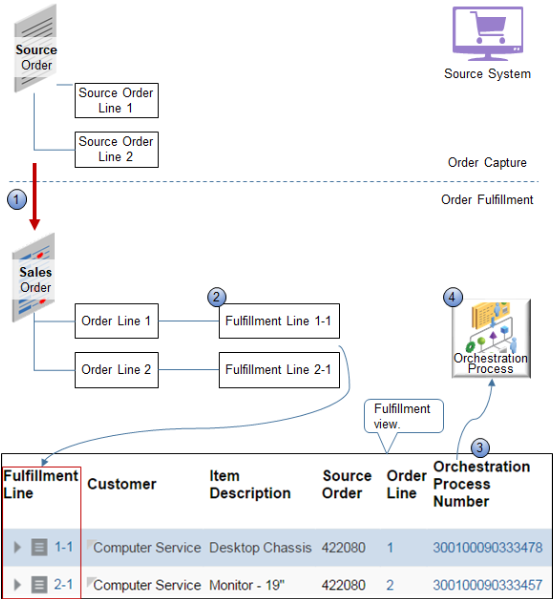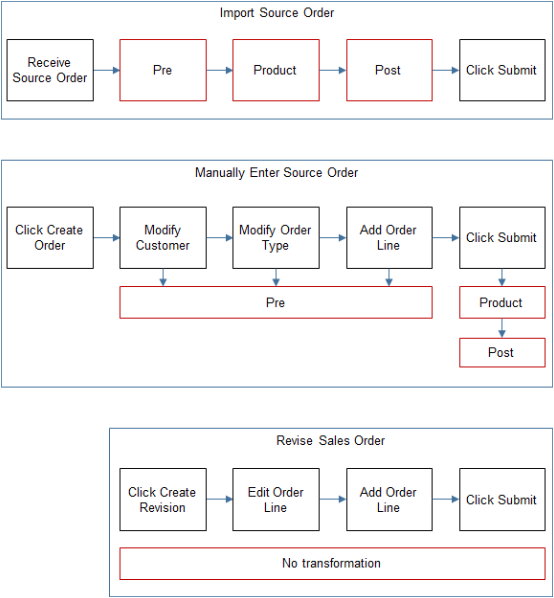How Order Management Transforms Source Orders Into Sales Orders
Order Management transforms the source order you create in Order Management or that it receives from a source system so it can optimize order fulfillment.

Here's how Order Management transforms a source order.
-
Receives a source order that you submit in Order Management or that it gets from a source system. The source order in this example includes three order lines.
-
Separates the source order into fulfillment lines.
-
Assigns each fulfillment line to a new orchestration process that it creates to orchestrate fulfillment for the fulfillment line.
For example, it might assign fulfillment line 1-1 to orchestration process 300100090333478, and fulfillment line 1-2 to orchestration process 300100090333457.
The diagram includes part of the fulfillment view you use to monitor fulfillment. For details, see Monitor Order Fulfillment.
-
Starts the orchestration process that fulfills the fulfillment line. You use the Switch to Fulfillment View action on the Order page of the Order Management work area to monitor the orchestration process.
Order Management typically finishes transformation within a few seconds after you click Submit.
Order Management sets the completion date of the final step in the orchestration process to the requested date of the source order. The Last Fulfillment Completion Step sets the final step of the orchestration process.
When Transformation Runs
Transformation runs depending on what starts transformation.

|
What You Do |
Transformation |
|---|---|
|
Import a sales order from a source system. |
Pretransformation, product transformation, and posttransformation runs during order import. These transformations run before you submit the sales order to order fulfillment. |
|
Create a new sales order in the Order Management work area. |
Pretransformation runs each time you modify the customer, modify the order type, or add an order line. Product transformation and posttransformation runs one time after you click Submit. |
|
Revise a sales order in the Order Management work area. |
No transformation runs. |
Parts of Sales Orders You Can Use After Transformation
Use these parts to monitor and manage order fulfillment.
|
Part of Sales Order |
Description |
|---|---|
|
Order |
Includes order lines and fulfillment lines.
|
|
Order line |
Typically references one fulfillment line.
|
|
Fulfillment line |
Part of a sales order you can modify in the Order Management work area. For example:
|
|
Orchestration process |
An order administrator can set up an orchestration process to determine the tasks that the process does. You can't modify an orchestration process in the Order Management work area, but you can monitor an instance of it while it manages the fulfillment line, and monitor progress. |
|
Return fulfillment line |
Represents a sales order line that Order Management uses to return items. Its similar to a fulfillment line, but it includes a set of attributes that are specific to returning items. |